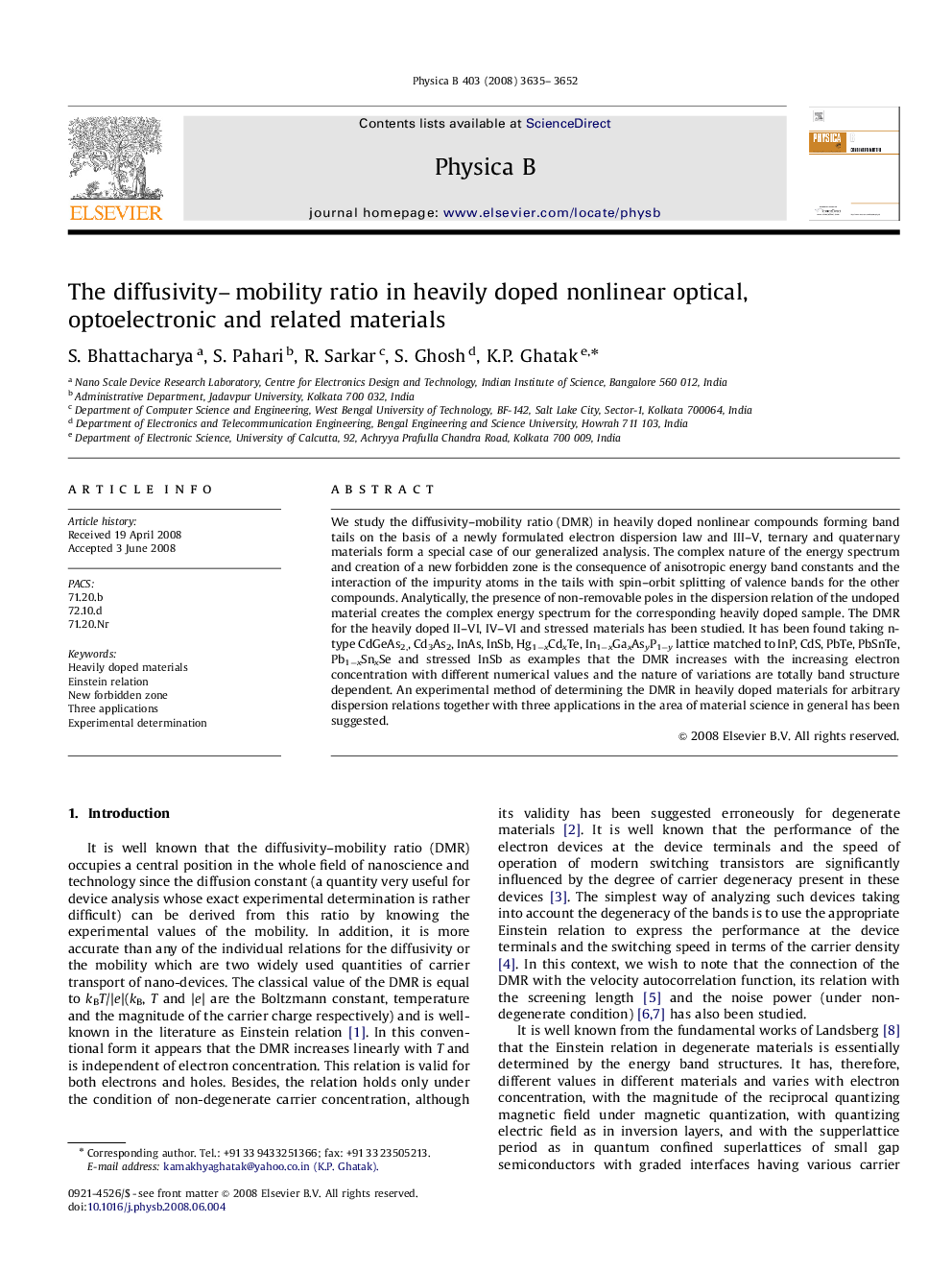| Article ID | Journal | Published Year | Pages | File Type |
|---|---|---|---|---|
| 1813877 | Physica B: Condensed Matter | 2008 | 18 Pages |
Abstract
We study the diffusivity-mobility ratio (DMR) in heavily doped nonlinear compounds forming band tails on the basis of a newly formulated electron dispersion law and III-V, ternary and quaternary materials form a special case of our generalized analysis. The complex nature of the energy spectrum and creation of a new forbidden zone is the consequence of anisotropic energy band constants and the interaction of the impurity atoms in the tails with spin-orbit splitting of valence bands for the other compounds. Analytically, the presence of non-removable poles in the dispersion relation of the undoped material creates the complex energy spectrum for the corresponding heavily doped sample. The DMR for the heavily doped II-VI, IV-VI and stressed materials has been studied. It has been found taking n-type CdGeAs2,, Cd3As2, InAs, InSb, Hg1âxCdxTe, In1âxGaxAsyP1ây lattice matched to InP, CdS, PbTe, PbSnTe, Pb1âxSnxSe and stressed InSb as examples that the DMR increases with the increasing electron concentration with different numerical values and the nature of variations are totally band structure dependent. An experimental method of determining the DMR in heavily doped materials for arbitrary dispersion relations together with three applications in the area of material science in general has been suggested.
Related Topics
Physical Sciences and Engineering
Physics and Astronomy
Condensed Matter Physics
Authors
S. Bhattacharya, S. Pahari, R. Sarkar, S. Ghosh, K.P. Ghatak,
